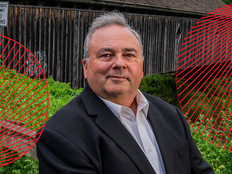“It not only provides good performance for the phone system, but it also integrates well with VMware. We can easily manage virtual machines, and with Cisco’s graphical user interface, it’s easy to carve out data stores for the VMs as well,” he says.
If one node goes down, the other three nodes can pick up the slack and keep the phone system running. To ensure uptime, the county also replicated the Avaya system to its private cloud at its managed service provider’s data center 80 miles away, in Madison, Wis.
“HyperFlex provides resiliency from hardware failure. But if there’s a lengthy power outage or disaster recovery situation, it will fail over to Madison,” Sacho says.
The county likes the scalability of hyperconverged systems. When more compute or storage is needed, it will simply buy more appliances, Sacho says.
While the county migrated about 240 virtual servers running life safety and business applications to a service provider, it still runs about 60 virtual servers on-premises, including domain controllers, Domain Name System services and archived data to fulfill public records requests. The county plans to buy two more HyperFlex nodes in the coming years when its remaining servers reach end of life, Sacho says.
“It makes sense to keep archives in-house instead of paying per gig in the cloud,” he says.
MORE FROM STATETECH: Discover how HCI improves state and local government disaster recovery.
Pasadena Gets Speedy Apps and Data Access via HCI
In 2018, Pasadena Water and Power upgraded from old blade servers and an aging storage array to new Dell EMC VxRail hyperconverged appliances to save money and simplify management for the California city, says David Chau, the department’s IT security officer.
Now, when employees spin up new VMs, they can also use VMware’s vSAN storage virtualization software to easily provision storage too.
“It’s one large storage volume. I no longer need to manage separate block storage. Before, having to create the LUNs [logical unit numbers] and present them to the cluster was painful,” Chau says.
The new, eight-node hyperconverged system is also incredibly fast, he says, thanks to SSDs and a boost in memory. The VxRail appliances supply a total of 195.6TB of all-flash storage and 6TB of memory — 3TB for each data center. With the previous equipment, the department had only 1.5TB of memory for its 200 virtual servers.
Now, Microsoft Windows servers on SSDs launch in five seconds — much faster than the 20 to 25 seconds it used to take on spinning disks — which has improved employee productivity. In fact, latency is now 0.1 millisecond, Chau says.
Employees rave about the speed of applications and data access.
“When our users run large SQL queries, it’s significantly faster,” Chau says. “Our application developers, SQL administrators and regular users love the performance. Everything is so snappy.”
The all-flash storage also allows for deduplication and compression, resulting in more efficient use of storage resources, Chau says. Deduplication (which eliminates duplicate copies of files) and compression save 35.5TB of storage, so instead of 120TB, the department is currently using only 84TB.
The hyperconverged system with vSAN also improves uptime by allowing the department to operate in a “stretched cluster” configuration. Four nodes in the department’s primary data center replicate to four nodes at a colocation site.
“Around 120 VMs are in full redundancy,” Chau says. “It can withstand a site failure with real-time replication.”
VIDEO: See how one local library made space for innovation with hyperconverged infrastructure.
A Path to Do-It-Yourself Hyperconvergence
Buying a vendor’s all-in-one appliance is only one way to deploy a hyperconverged system. Government agencies can also build their own with hyperconverged software, benefitting from both customization and flexibility.
That’s exactly what Emergency Communications of Southern Oregon, in Medford, Ore., did about two years ago. The 911 communciations center did so through the combination of DataCore Hyperconverged Virtual SAN software and VMware server virtualization software on Dell PowerEdge servers.
The center, which links 10 law enforcement agencies, 14 fire departments and more, deployed two servers at its primary data center and replicated its applications and data to two servers at its backup data center.
HCI offers the latest storage features, including SSDs and support for the NVMe high-speed transport protocol (both of which provide faster data access), as well as deduplication and compression, which eliminate redundancies and store data using less space.






_0.jpg)



